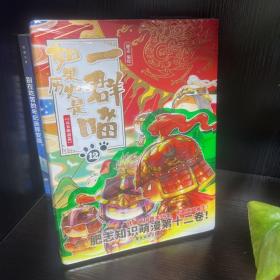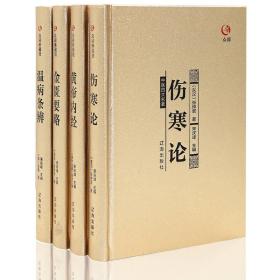
正版书籍植被与生态遥感张佳华 等9787030296856新华仓库多仓直发
正版新书 新华官方库房直发 可开电子发票
¥ 68.89 7.0折 ¥ 99 全新
库存4件
江苏无锡
认证卖家担保交易快速发货售后保障
作者张佳华 等
出版社科学出版社
ISBN9787030296856
出版时间2010-11
装帧平装
开本其他
定价99元
货号1202459737
上书时间2024-09-20
- 在售商品 暂无
- 平均发货时间 14小时
- 好评率 暂无
- 店主推荐
- 最新上架
商品详情
- 品相描述:全新
- 商品描述
-
目录
目录
前言
第1章 绪论 1
1.1 植被生态系统在全球气候系统的作用 1
1.2 植被与生态遥感研究 10
参考文献 17
第2章 陆地植被参数遥感 23
2.1 植被叶面积指数遥感 23
2.2 植被三维结构遥感建模 41
2.3 植被气孔导度遥感 52
参考文献 57
第3章 植被水分和干旱遥感 62
3.1 引言 62
3.2 高光谱与多角度野外作物水分观测 70
3.3 辐射传输模型及多角度分析 77
3.4 去除土壤背景影响的植被水分指数 88
3.5 卫星遥感数据反演植被水分分布 104
参考文献 112
第4章 农业植被面积遥感估算 116
4.1 农业植被种植面积遥感进展 116
4.2 融合多源遥感和地面观测的农业植被面积遥感 119
4.3 典型区农业植被面积遥感估算 128
参考文献 136
第5章 陆地植被生产力遥感 139
5.1 陆地植被生产力研究意义 139
5.2 陆地植被生产力研究进展 140
5.3 森林植被生产力遥感 144
5.4 森林植被NPP尺度转换方法 159
5.5 作物产量遥感估算 175
5.6 高原草地生物量遥感 184
参考文献 189
第6章 植被与土地覆盖分类及动态评价 194
6.1 陆面植被覆盖分类遥感 194
6.2 基于MODIS遥感数据的土地覆盖分类与评价 202
6.3 基于TM数据的土地覆盖分类——以城市为例 210
6.4 基于ASTER遥感数据的土地利用分类 217
6.5 小结 223
参考文献 224
第7章 气候-陆面植被相互作用遥感 227
7.1 陆面过程参数化遥感 227
7.2 全球生态-气候响应遥感 231
7.3 区域生态对东亚季风的响应 235
7.4 青藏高寒生态区植被-气候相互作用 239
7.5 小结 255
参考文献 255
第8章 土壤风力侵蚀因子遥感定量模型 258
8.1 中国土壤风力侵蚀强度定量遥感 258
8.2 中国风场强度因子定量分析 268
8.3 中国土壤可蚀性因子定量遥感 277
8.4 中国土壤结皮因子定量分析 280
8.5 中国积雪因子定量遥感 286
参考文献 296
第9章 土壤风力侵蚀遥感与影响 300
9.1 中国沙地空间分布及其变化监测 300
9.2 中国绿洲区耕地和沙地变化 309
9.3 青藏高原土壤风力侵蚀与影响 327
9.4 内蒙古土壤风力侵蚀动态遥感与影响 334
参考文献 359
彩图
Contents
Preface
Chapter 1 Introduction 1
1.1 Vegetation ecological role in the global climate system 1
1.2 Remote sensing of vegetation and ecological research 10
References 17
Chapter 2 Remote sensing of terrestrial vegetation parameters 23
2.1 Remote sensing of vegetation leaf area index 23
2.2 Three-dimensional structure of vegetation remote sensing modeling 41
2.3 Remote sensing of vegetation stomatal conductance 52
References 57
Chapter 3 Remote sensing of vegetation moisture and drought 62
3.1 Introduction 62
3.2 Crop water with hyperspectral and multi-angle observation 70
3.3 The radiative transfer model and multi-angle analyses 77
3.4 Vegetation water index removing the soil background effect 88
3.5 Vegetation moisture spatial distribution based on remote sensing 104
References 112
Chapter 4 Cropland area remote sensing 116
4.1 Progress of crop land area remote sensing 116
4.2 Cropland area remote sensing integrated multi-source and ground observations 119
4.3 Typical cropland area remote sensing 128
References 136
Chapter 5 Vegetation primary productivity remote sensing 139
5.1 Research significance of vegetation primary productivity 139
5.2 Research progress of vegetation primary productivity 140
5.3 Remote sensing of forest vegetation primary productivity 144
5.4 Scale transfer of forest vegetation NPP 159
5.5 Crop yield remote sensing estimation 175
5.6 Grassland biomass remote sensing estimate in Qinghai-Tibet Plateau 184
References 189
Chapter 6 Land cover classification remote sensing and evaluation 194
6.1 Remote sensing of land surface vegetation classification 194
6.2 Land cover based on the MODIS and evaluation 202
6.3 Urban land cover change based on the TM data and evaluation 210
6.4 Land use classification based on ASTER data 217
6.5 Summery 223
References 224
Chapter 7 Remote sensing of climate-vegetation interactions 227
7.1 Land surface processes parameters remote sensing 227
7.2 Analysis of global ecosystem in response to climate 231
7.3 Remote sensing of regional ecology in response to the East Asian monsoon 235
7.4 Analysis of the Qinghai-Tibet alpine vegetation-climate interaction 239
7.5 Summery 255
References 255
Chapter 8 Quantitative remote sensing of soil wind erosion model in China 258
8.1 Chinese soil wind erosion intensity quantitative remote sensing 258
8.2 Chinese wind intensity factor quantitative remote sensing 268
8.3 Chinese soil erodibility factor quantitative remote sensing 277
8.4 Chinese soil crust factor quantitative remote sensing 280
8.5 Chinese snow cover factor quantitative remote sensing 286
References 296
Chapter 9 Remote sensing of soil wind erosion and impact assessment 300
9.1 Remote sensing of Chinese sand changes in spatial distribution 300
9.2 Remote Sensing of arable land in Chinas oasis and sandy land change 309
9.3 Remote sensing of Qinghai-Tibet Plateau soil wind erosion and assessment 327
9.4 Remote sensing of soil wind erosion in Inner Mongolia and assessment 334
References 359
Colour graph
内容摘要
本书介绍多源遥感研究在植被与生态应用的工作原理和信息源;利用遥感技术、地理信息系统结合生态模拟,对植被结构参数中叶面积指数LAI进行了详细研究。研究作物三维结构和虚拟建模,地面遥感测定了玉米冠层的三维结构,玉米冠层的多角度反射分布,玉米分层叶片的生化参数(叶绿素和水分含量),研究了不同含水量的玉米叶片的多角度反射分布和不同时期大田玉米结构场景;构建了玉米叶片的BRDF物理模型,用以对多角度作物水分反演的定量基础研究;准确地模拟玉米株型及冠层结构。
— 没有更多了 —





















以下为对购买帮助不大的评价